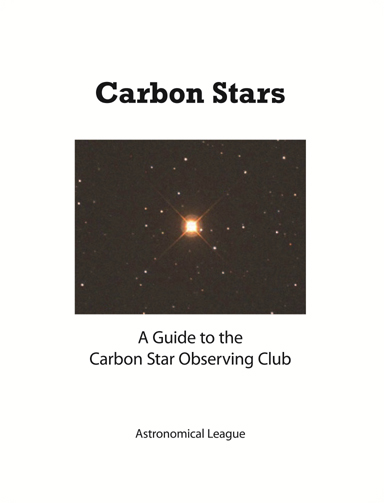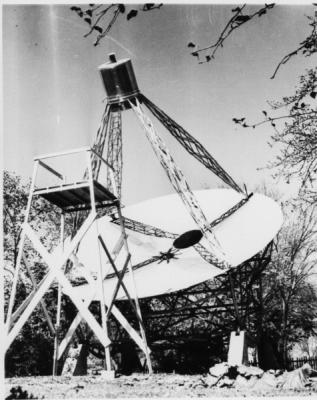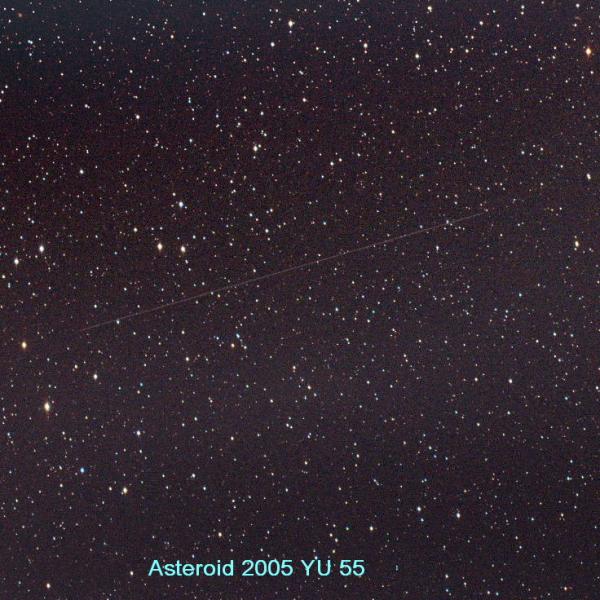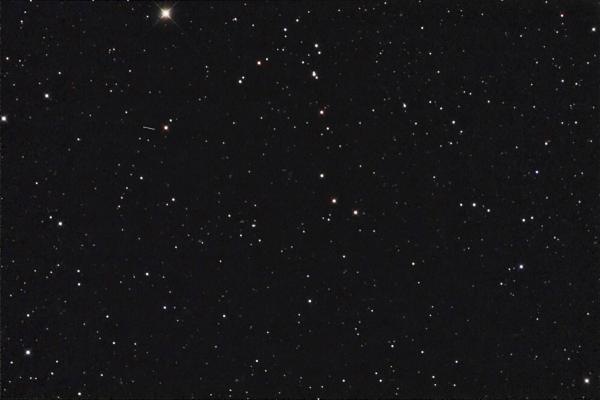Carbon Star Observing Club Manual in Stock


On Thursday, Feb. 9, beginning at 9 pm PST, 8 pm MST, 7 pm CST, 6 pm EST Dr. Soifer will present some of the most exciting results from NASA’s Spitzer Space Telescope. Among its many discoveries include detecting emissions from hot Jupiters orbiting other stars, finding Fullerene (carbon buckyball) molecules in space, observing prebiotic molecules in galaxies seen less than 3 billion years after the Big Bang, and measuring the masses of the most distant and youngest galaxies known. Dr. Tom Soifer is a Keck Observatory board member, Director of the Spitzer Science Center and Chair of the Division of Physics, Mathematics and Astronomy at Caltech.
By Bill Pellerin, GuideStar Editor
Houston Astronomical Society
The autoguiding software that I use for my variable star imaging works great and you can get it on the Internet for free. (I made a donation to the creator of this software because I like the software very much, and to encourage further development.) The software I use to get images from the camera to the computer came with the camera at no additional charge. The image processing software that I use to dark subtract and to stack images was downloaded from the camera manufacturer’s web site at no charge. The software does everything that I need done.
The software used to analyze the images and determine star magnitudes resides somewhere in cyberspace and is available to me because I’m a member of the American Association of Variable Star Observers (AAVSO), so it’s almost free.
I used free software to calculate field-of-view and image scale for various chip and telescope combinations. I use the free ASCOM software that provides the connection between software and the telescope and the imaging hardware. My observation planning software and my sky mapping software are both bought-and-paid-for commercial products, and worth every penny.
There is a lot of other free (and useful) software that I don’t use. There’s software for automatically focusing your telescope; there is software that assists in polar aligning your telescope mount; there is more sophisticated image processing software; and, of course, sky mapping and telescope control software.
I haven’t even mentioned the free (or very inexpensive) software you can get for your mobile device (that’s what they’re called these days). Some of it is extraordinarily useful. One little application that I have tells me when sunset and sunrise are (and moon phase). Really important information for observers. There are plenty of weather applications for your personal computer and for your handheld.
Amateur astronomy has the reputation of being an expensive endeavor. It can be, but it doesn’t have to be. My home club, the Houston Astronomical Society, was recently visited by Robert Reeves. Robert lives in San Antonio, and is the author of several books including Introduction to Digital Astrophotography, Wide Field Astrophotography, and Introduction to Webcam Astrophotography.
Robert Reeves has spent a lot of time recently photographing the moon in high resolution. He is using an 8” SCT that he has owned for over 30 years, a nice equatorial mount, and a relatively inexpensive camera for his work. He has used a webcam in the past, and webcams are quite inexpensive. He fitted the telescope with some mirror-locking bolts (to eliminate image shift when focusing) and added an external focuser to the back of the telescope tube. He uses the software that came with the camera for image capture, and he uses free image stacking software that he downloaded from the Internet.
Why would people give away their computer programming effort for free, or almost for free? It could be for any one or all of several reasons. They may enjoy the act of creating and debugging the software; they may enjoy contributing to the astronomical community something of value; they may want or need some software that doesn’t already exist, so they decide to write it themselves (and share it with others).
What about the hardware? My home club has a stable of telescopes that are available for members to take home and use at no cost. There’s also an 18 acre observing site about 80 miles out of town available at the cost of membership. There are also club-owned telescopes, in an observatory, at the observing site, that are available to members following a short training course.
If you live near a university or in a large city there may be telescopes that go unused much of the time (for any one of various reasons). If you volunteer to help, you may find that the telescope is available for you to use.
How can you study astronomy for free? There is a torrent of research information that’s available at no cost. Your public library wants to put astronomy books in your hand so you can learn something new. The Internet is replete with new information on what’s going on in the world of astronomy. Webcasts, podcasts, and online college courses are all over the Internet, many for free.
So, look for resources that are available to you. You’d be surprised how much is available at little or no cost. If you want to do astronomy (even research) you can do it. Get creative, think about possibilities, ask around, get involved. You may soon find that your only limitation is the time to use all that’s available to you.
By Bill Pellerin
Houston Astronomical Society
GuideStar Editor
When you think about the pioneers in astronomy, the name Grote Reber does not generally come to mind. Yet, it is Grote Reber who was one of the early observers of the sky at radio frequencies.
When we observe the sky in visual light, we are taking advantage of the fact that our eyes see a small part of the electromagnetic spectrum; we call this part of the spectrum visual light. The electromagnetic spectrum includes radiation at many other wavelengths, though, and observing the sky at these other wavelengths can tell us things about the sky that we can’t learn from what we observe at visual wavelengths.
 Radio astronomer Grote Reber was born in 1911 and died in 2002, just two days shy of his 91st birthday. He was an electrical engineering graduate of what is now known as the Illinois Institute of Technology and an amateur radio operator with the call sign W9GFZ. That amateur radio call sign is now owned by the National Radio Astronomy Observatory Amateur Radio Club in Socorro, NM.
Radio astronomer Grote Reber was born in 1911 and died in 2002, just two days shy of his 91st birthday. He was an electrical engineering graduate of what is now known as the Illinois Institute of Technology and an amateur radio operator with the call sign W9GFZ. That amateur radio call sign is now owned by the National Radio Astronomy Observatory Amateur Radio Club in Socorro, NM.
A personal note – on August 28, 2000 I made contact with W9GFZ via ham radio on the event of the dedication of the Green Bank (WV) radio telescope and I have a confirming postcard from that day as a souvenir.
Mr. Reber’s work in radio astronomy is only preceded by Karl Jansky’s work. Jansky was working for Bell Telephone Labs on a project to determine sources of interference in transcontinental cable systems. In completing this work, Jansky discovered a radio signal that was associated with the Milky Way, and was, as might be expected, strongest in the Sagittarius constellation – the center of the Milky Way galaxy. Jansky was not authorized by his employer to continue the investigation of the radio signals from space so his work on the subject was completed once radio sources that would interfere with cable communications were identified. The radio signals from space were too weak to affect cable communications.
Image credit: work by the U.S. government
Grote Reber, hearing of Jansky’s work, applied to work at Bell Labs in 1933, but this was during the depression and no job was available. Undaunted, Mr. Reber personally funded and built his own radio telescope, a 31 foot dish, at his home in Wheaton, Illinois. He had contacted a construction company about building the dish for him, but the cost would have been $7000. This was in 1936; adjusted for inflation the cost would have been over $110,000 today. This was out of the question, so he built the antenna himself, at his own expense, in four months. He spent $1300 (over $23,000 today) of his own money on the project. The finished antenna was considered to be the first radio telescope – designed and built to examine radio signals from space.
With the electronics built and the observing program designed, and after a couple of false starts (he initially chose the wrong frequencies to monitor), Grote Reber began his observing program in 1939. Every evening, after work, he would monitor the output of the system and record the results on paper charts. He produced a map of the sky showing the parts of the sky that were ‘bright’ at radio frequencies and confirmed Jansky’s results. These results were ultimately published as radio ‘brightness’ contour diagrams in the Astrophysical Journal and in Sky and Telescope magazine, April 1949. The Sky and Telescope article is interesting. In this article, Reber calls radio astronomy a “borderline science” but then goes on to discuss the meaning of the relative intensity of radio signals in various parts of the Milky Way. He comments that the radio profile in Sagittarius is “quite complex” and he concludes the article by suggesting that more surveys are needed at other radio frequencies and that a dedicated radio telescope near the equator could make a significant contribution to the science.
Reber determined that the radio signals were stronger at lower frequencies (longer wavelengths). This finding ruled out thermal radiation (radiation that occurs due to the motion of charged particles) as the source of the radio signals; thermal radiation would be stronger at higher frequencies. Only a few years later, the source of the radio signals was found to be what is called synchrotron radiation. This radiation occurs when electrons, moving near the speed of light, undergo a change in velocity as the result of a magnetic field.
The interesting thing is that for 10 years, Reber was the only one looking at the sky at radio wavelengths. Following the publication of his results, he began to get noticed, and was hired at the University of Virginia. His telescope was moved to Green Bank, WV in the 1960’s and it is there today.
Reber then went to Hawaii to continue his work in a less noisy radio environment. From there, for the last 50 years of his life, he lived in Tasmania (off the southeast coast of Australia). Tasmania provided a even quieter radio environment, especially on long winter nights.
He never accepted the idea of an expanding universe and the concept of the Big Bang and published a paper about the ‘Stable Universe’.
If you find yourself in Cambridge, Tasmania, drop by the Grote Reber Museum.
By Bill Pellerin Houston Astronomical Society GuideStar Editor Those of us who are astronomy enthusiasts are often asked by family and friends to identify an inexpensive item that we’d enjoy receiving as a gift. The purpose of this article is to identify several items that you may enjoy and provide you the information you need to hand off to your gift-giver. The range of prices for these items is about $10 to about $200. You should be able to find something you need that fits the budget of the giver (even if you’re giving to yourself). I have no financial interest in any company or product mentioned here… just so you know. Lunawheel Moon Phase Calculator—$17.50 (includes shipping) from http://www.lunawheel.com . This gadget calculates the moon phase for any date 2000 years in the past or 2000 years in the future. Figure out if any day is good for observing (lunar or deep sky). There are other interesting gadgets at the web site, too. Casio PAS400B-5 Wristwatch — about $30 from http://www.amazon.com . I’ve had one of these for years. In addition to telling you the mundane things like the time and date, it also tells you the moon phase, and sunrise and sunset times. (It doesn’t tell you moonrise and moonset times, though.) It’s marketed as a fishing watch, and there are other similar models in the Casio line. You have to enter your latitude and longitude manually. Fishing vest — ~ $30 – $40 from various sources. Do an Internet search for ‘fishing vest’ and you’ll find plenty of these to buy. These are valuable to amateur astronomers because they have lots of pockets. You can use these pockets for eyepieces, filters, notepads, snacks, pens, flashlights, (small) sky maps, hand warmers, etc. I have one of these that I use on the observing field and it’s great. Small tool kit – Lots of these are available at computer stores and other general stores. When you go for an observing run it’s always a good idea to take a few tools along, so a small tool kit could save the day (night, actually). You don’t need the best possible tools, because these won’t get a lot of use. I have one that has small pliers, a screwdriver (with interchangeable bits), hex wrenches, wire cutters, and so on. It’s good to know all that stuff is available if I need it. The Observer’s Handbook 2012 – $26.95, published by the Royal Astronomical Society of Canada, http://rasc.ca/handbook. This is a great publication showing you what is going on in the sky in 2012. It’s not a substitute for a good set of sky charts, or the electronic equivalent, but absolutely worth having. Darkness — $1.99 from the iTunes app store. This little app tells you when the sunrise and sunset will happen for your location, the moon phase, the moonrise and moonset times, and the time of astronomical twilight. Astronomical twilight is the time at which the sun is about 15 degrees below the horizon. The sky is not as dark as it will be, but it is dark enough to begin observing of brighter objects. Astronomical dusk, when the sun is at least 18 degrees below the horizon is not reported by this software. There is another app, called ‘Phases’ which provides similar information, but it is more focused on the moon. Sky and Telescope’s Pocket Sky Atlas – If you’re still use paper maps, this is a great set to have. This atlas is small and easy to carry (although you’d need a big pocket to put it in), and it includes stars down to 7th magnitude (which you’d be hard-pressed to see from most sites), and 1500 deep sky objects. The book is spiral bound, so it lays flat on your observing table. This atlas does not include observing lists or descriptions of the objects on the charts. You’ll need to bring an observing list with you when you use this atlas. I have two of these – one at home, and one at my observing site. While I use my computer as my sky map, it’s good to have these maps in case my computer fails. Green Laser Pointer – Available from all the astronomy equipment sellers; at least one of them is available for about $70. (Doing an Internet search, I found some that are $10 or less – maybe these work, and maybe not. Buyer beware.) Although these are not welcomed on a field full of serious observers, they are indispensable when you’re doing a public star party. You’ve probably seen these. They shoot a green beam of laser light through the sky which reflects off the dust and moisture in the air. I’ve used mine to point to, say, Albireo in the sky when I’m showing the public Albireo in the telescope. Kids are amazed by these, but I never let them use the pointer. The problem is that sometimes they become more interested in the laser than in the sky. Wonders of the Universe / Wonders of the Solar System – These are two DVD / Blu-Ray sets that are visually arresting and fascinating. They were produced by Brian Cox for the BBC and the content has the power to make you see the solar system and the universe differently. Each set is about $20 in either DVD or Blu-Ray format. If you have a HD TV and a Blu-Ray player the visuals will be all the more beautiful. There are also books with the same titles by Brian Cox. You won’t be disappointed with these. The Great Courses – There are several astronomy and many science related video (and some audio) presentations from this company (www.thegreatcourses.com), including a new course by Alex Filippenko from UC Berkeley. It’s called Skywatching: Seeing and Understanding Cosmic Wonders. There’s a course by Neil DeGrasse Tyson, called My Favorite Universe. There are more courses on black holes, on the contribution of the Hubble Space Telescope, and much more. Prices vary depending on the length of the course, and you always want to wait for a course to be on sale to get the best value. I own several of these courses and they’re all excellent. Be aware, that while these courses are often accompanied by graphics and images, much of the course consists of lecturing from a desk or a lectern. Don’t expect a visually dazzling presentation. Observer’s Chair – If you don’t have one of these, you’ve probably seen one. The idea of these chairs is that the height of the seat is adjustable and so, for many telescopes, you can adjust the seat height so that you can look through the eyepiece while sitting down. You should not underestimate the value of being able to hold your body (and head) still while observing. It makes a huge difference. These are not cheap, at from $150 to $200, but they’re worth the money. I have only bought one of these and it has lasted me many years. Look for one that is robust and will last a while. As an example, go to http://www.telescope.com (Orion telescope), and search for item 05939. Two-way radios – If you are out with a friend or a spouse and you’re not in cell-phone territory (the dreaded ‘no service’ area), you can solve the we-got-separated problem with a pair of FRS Radios. FRS stands for Family Radio Service, and it was created to provide a capability for family members to keep in touch, over short distances, by radio. The Federal Communications Commission authorized FRS radio service in 1996. These use UHF FM and are not subject to interference by other radio services. When these radios initially became available, they were quite expensive; now they’re not. For under $50 you should be able to get a set that you can use for many years. No license is required. The next step up is called General Mobile Radio Service (GMRS) and uses higher powered radios, which means they can operate over longer distances. You have to apply to the FCC to operate these radios, however. Moon filter – If you’ve ever looked at the moon through your telescope, and who hasn’t, you know that the brightness of the moon can be dazzling. To solve this problem, there are neutral density filters that fit your eyepiece and reduce the glare substantially. The word ‘neutral’ means that they reduce the brightness of all colors at the same time and don’t leave you looking at a green or pink moon. These cost from $20 (1.25”) to $25 (2”). If you want to be a bit more in control, you can get a filter with two polarized filters. You can then adjust the filters to change the brightness reduction. If you are an avid lunar observer, this is what you may want. Happy holidays to you, and clear skies!

Image of YU55 by Gary Garzone.

Image of asteroid 2005YU55 by Brian Kimball
By Bill Pellerin
Houston Astronomical Society
GuideStar Editor
At our annual Astronomy Day event, I’ll often point to Vega and say, “That star is 25 light-years away and this means that the light takes 25 years to reach us.” But, how do we know that Vega is 25 light years away? How did we determine this?
This is an interesting subject. Even the distance to the Sun wasn’t well determined until the 1960’s when radar ranging was used to measure the distance. The process is easy, send a radio pulse to an object, and see how long it takes to get there and bounce back. If you know the speed of the radio pulse, and we do, it’s easy to calculate the distance using the formula we learned in high school — d=r*t. That is, the distance is equal to the rate (speed) multiplied by the time. Since the radio pulse has to travel to the object and back the calculation for this is d=r*t/2.
By Bill Pellerin
Houston Astronomical Society
GuideStar Editor
Last month, I wrote an article about the way we categorize nebulae (clouds in the sky). There are emission, reflection, and nebulae, which tells you how they are visible to us. The other way to categorize nebulae is as pre-stellar (star forming) and post-stellar (a remnant of a burned out star). I recently viewed the Wonders of the Universe video series by Brian Cox (highly recommended) and one of his subjects is the lifecycle of the universe and how objects in space fit into that story. That is, if we look at how the universe began, how it got to where it is today, and the future of the universe we get another perspective on nebulae.
So, let’s go all the way back to the beginning of the universe, the Big Bang. Various light elements came into being as the result of the Big Bang, but the heavier elements did not. The Big Bang, while extremely hot was also of short duration. In other words, there was not enough time for heavier elements to form as a result of the Big Bang. This formation of elements as a result of the Big Bang is called ‘Big Bang nucleosynthesis’.
What the universe began with, and what were the building blocks of the future universe, were (75%) hydrogen, (25%) helium, and small amounts of lithium and beryllium. That’s it. No carbon, oxygen, or anything else existed yet existed. The universe had to wait for these elements to be formed.